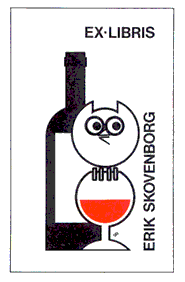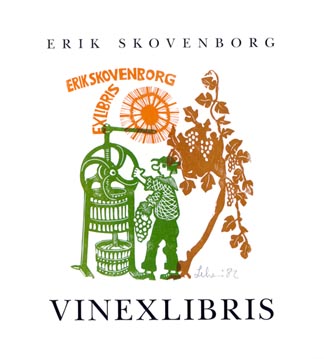it comes to beautiful and varied motifs -
not only as splendid illustrations for wine
books, but also as an inspiration for book-
plate-designing artists.
Simplicity, humour and the well-balanced use
of colour are the hallmarks of the Danish
bookplate-artist Per Christensen’s wine-exlibris.

